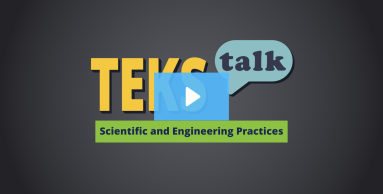
Knowledge and Skills Statement
The further explanation is designed to be a resource for educators that helps them better understand the topic their students are learning. Further explanations may be written at a more complex level than would be expected for students at the grade level.
The Science, Technology, Engineering, and Mathematics (STEM) Occupations List was developed to analyze STEM occupations in Texas. This resource can be used as a reference by educators to inform programming and when advising students about education requirements in different STEM careers. The Texas Education Agency used criteria to determine which occupations align with the STEM definition in Texas. Texas has defined STEM as a methodology of applying content to innovate products or processes to solve problems. Occupations on the STEM List require employees to use science and math to design solutions using technology regularly.
Research
Kier, Meredith, Margaret R. Blanchard, and Jennifer L. Albert. “Connecting Students to STEM Careers.” Science Scope, (February 2014): 72–76.
http://www.nsta.org/science-scope/science-scope-february-2014/connecting-students-stem-careers
Summary: Students in this article are introduced to STEM careers and different jobs in the STEM field. There are many misconceptions students have about STEM careers, one being that STEM careers do not allow for creativity. It is important for students to understand how what they learn in class connects to the real world and how it can be used in their future careers. Many students may not have much exposure to STEM careers if they don’t learn about them at school. In this article, students are introduced to STEM careers that use the skills they have recently learned in class and are allowed to discuss which careers interest them. Teachers can also use virtual field trips to teach students about STEM careers.
Research
Blotnicky, Karen A., Tamara Franz-Odendaal, Frederick French, and Phillip Joy. A Study of the Correlation between STEM Career Knowledge, Mathematics Self-efficacy, Career Interests, and Career Activities on the Likelihood of Pursuing a STEM Career among Middle School Students. International Journal of STEM Education 5, no. 22 (2018). https://doi.org/10.1186/s40594-018-0118-3
Summary: The results of this study show that students in middle school have a limited STEM career knowledge with respect to subject requirements and with respect to what sort of activities these careers involve. Furthermore, students with low MSE have a declining interest in STEM careers. Our data thus support the need to improve access to knowledge to facilitate students’ understanding of STEM careers and the nature of STEM work. Exposure of students to STEM careers can enhance their interest in pursuing careers involving science, technology, engineering, and mathematics.
